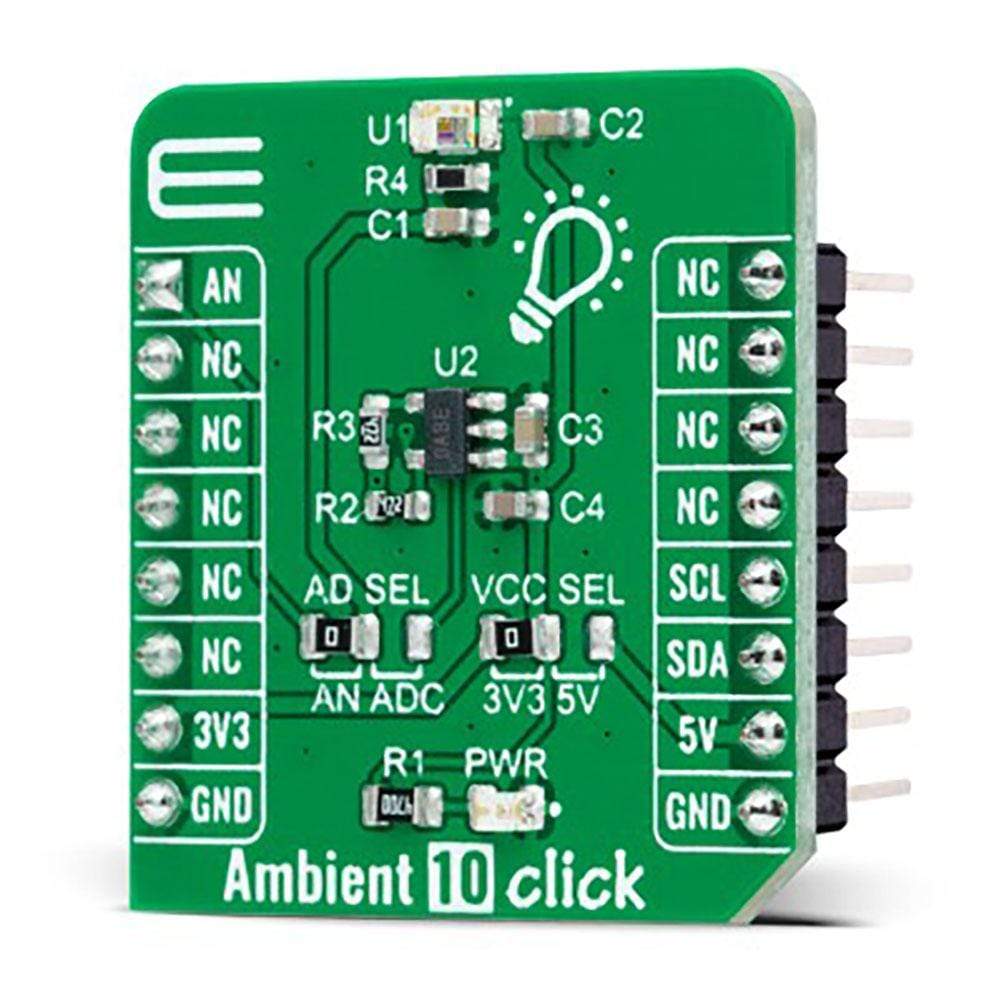
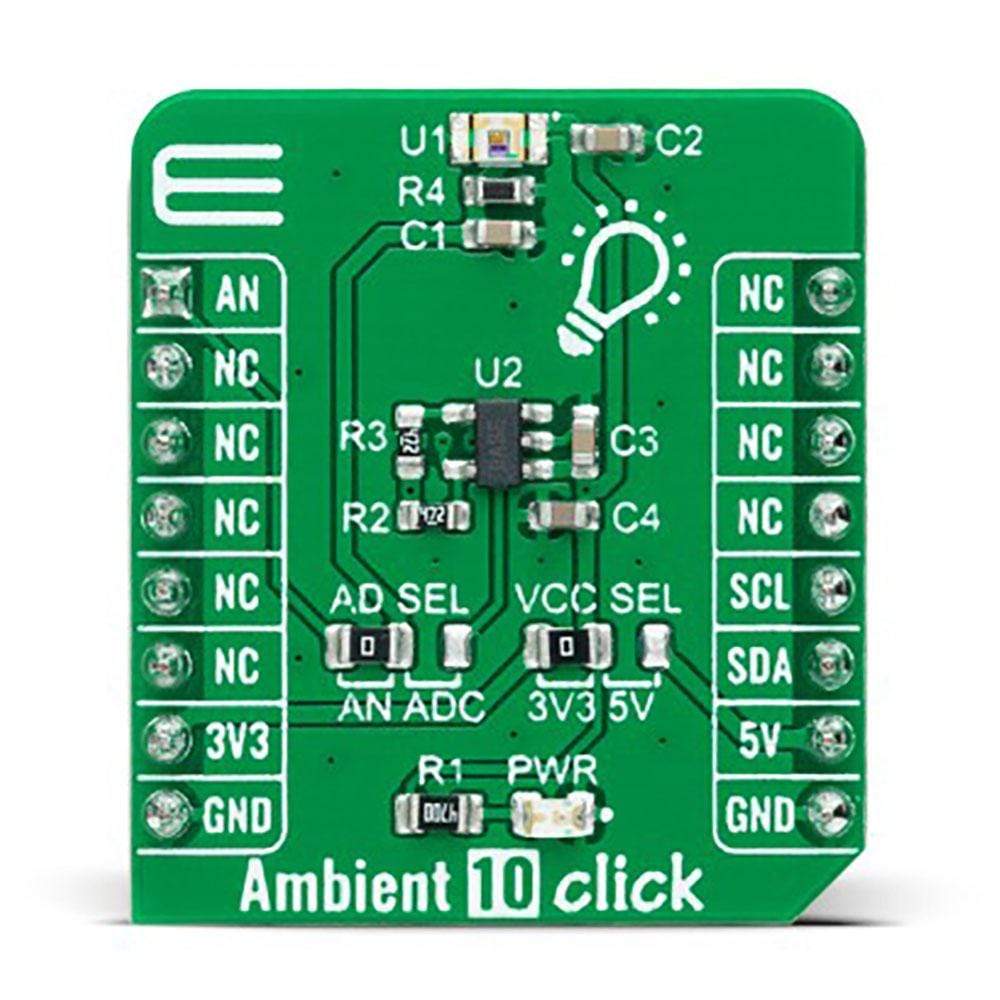
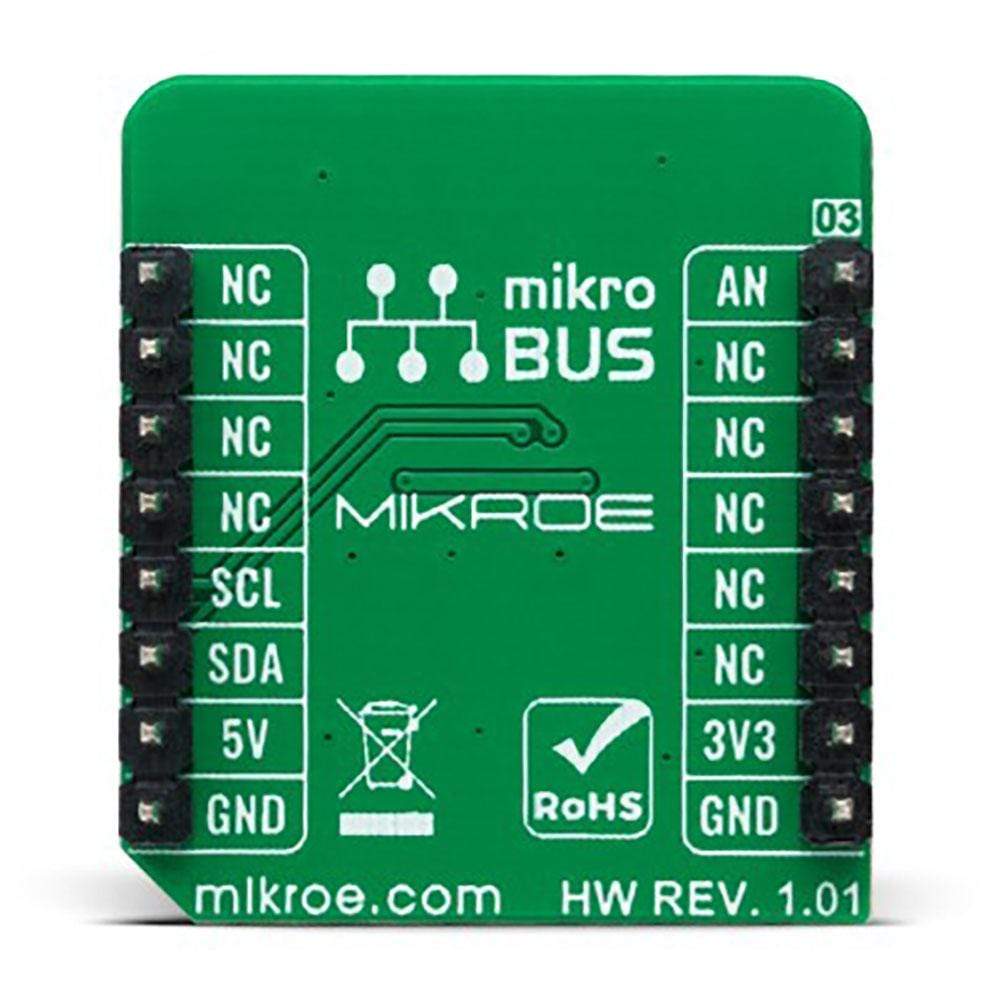
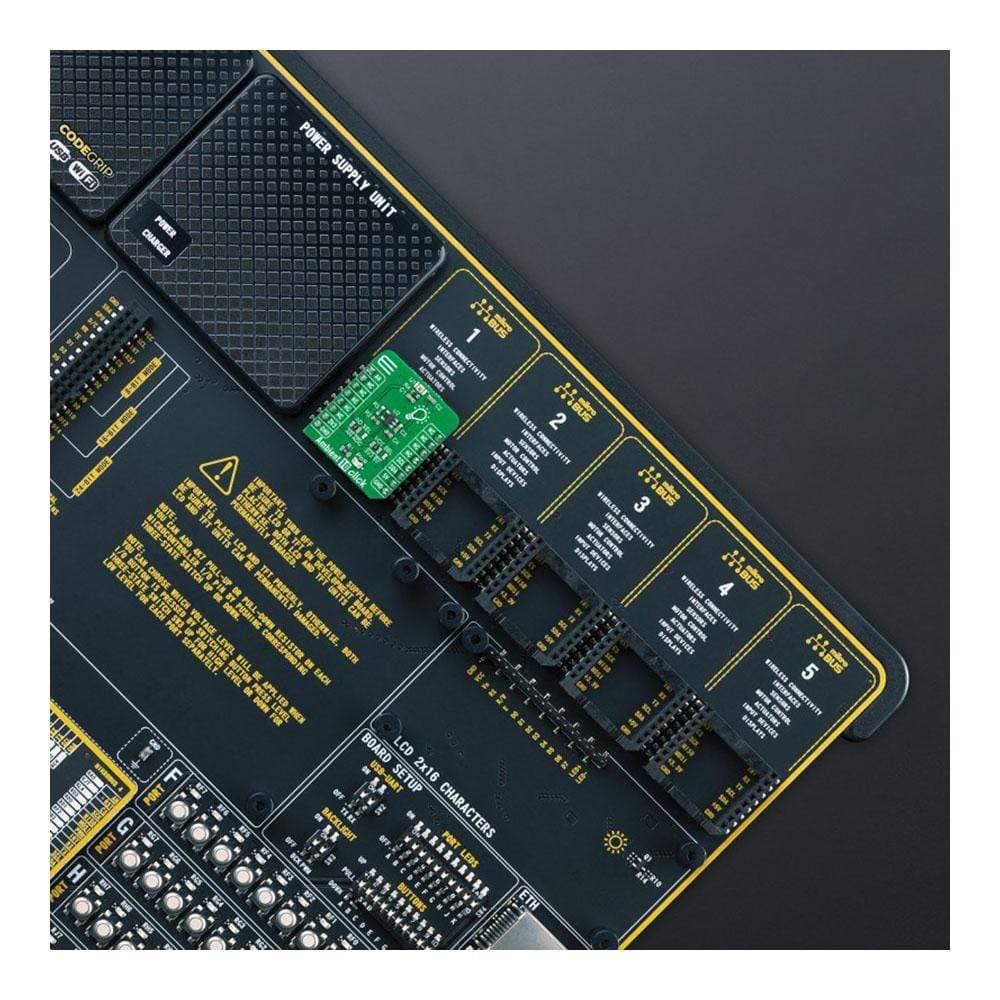
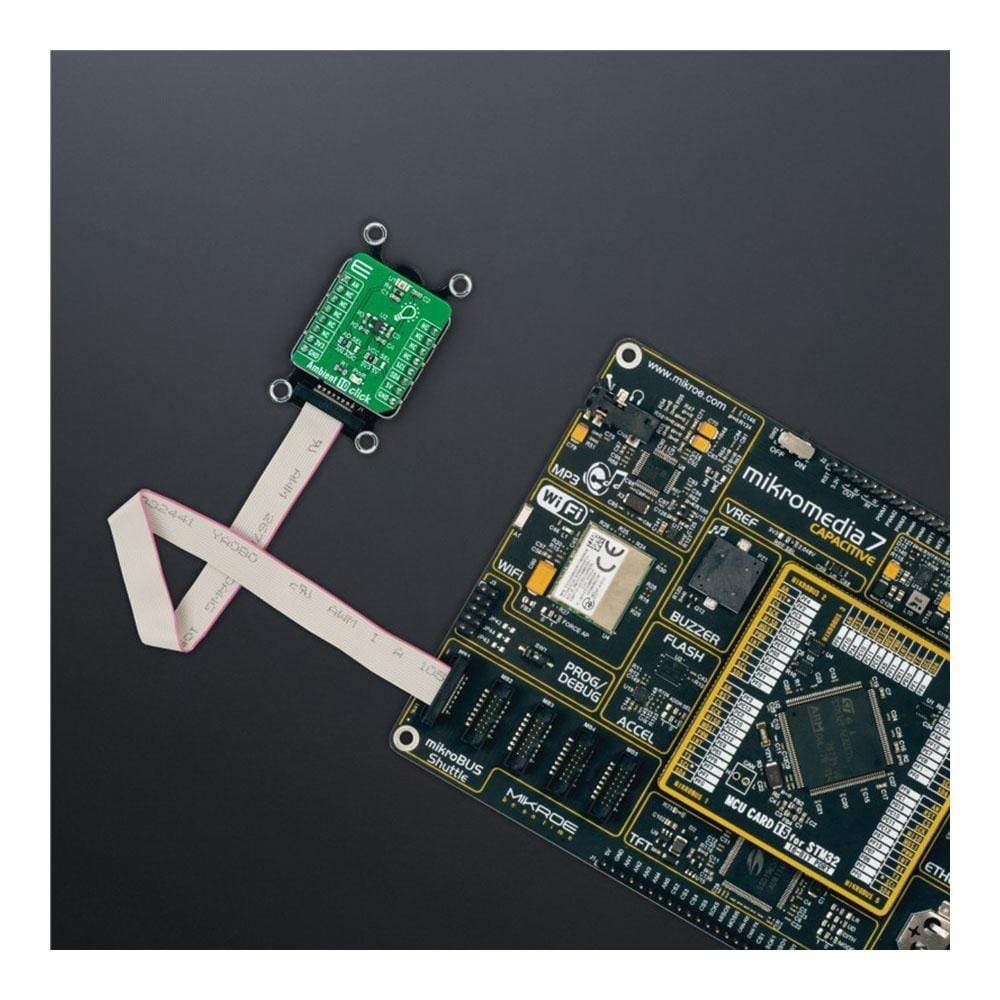
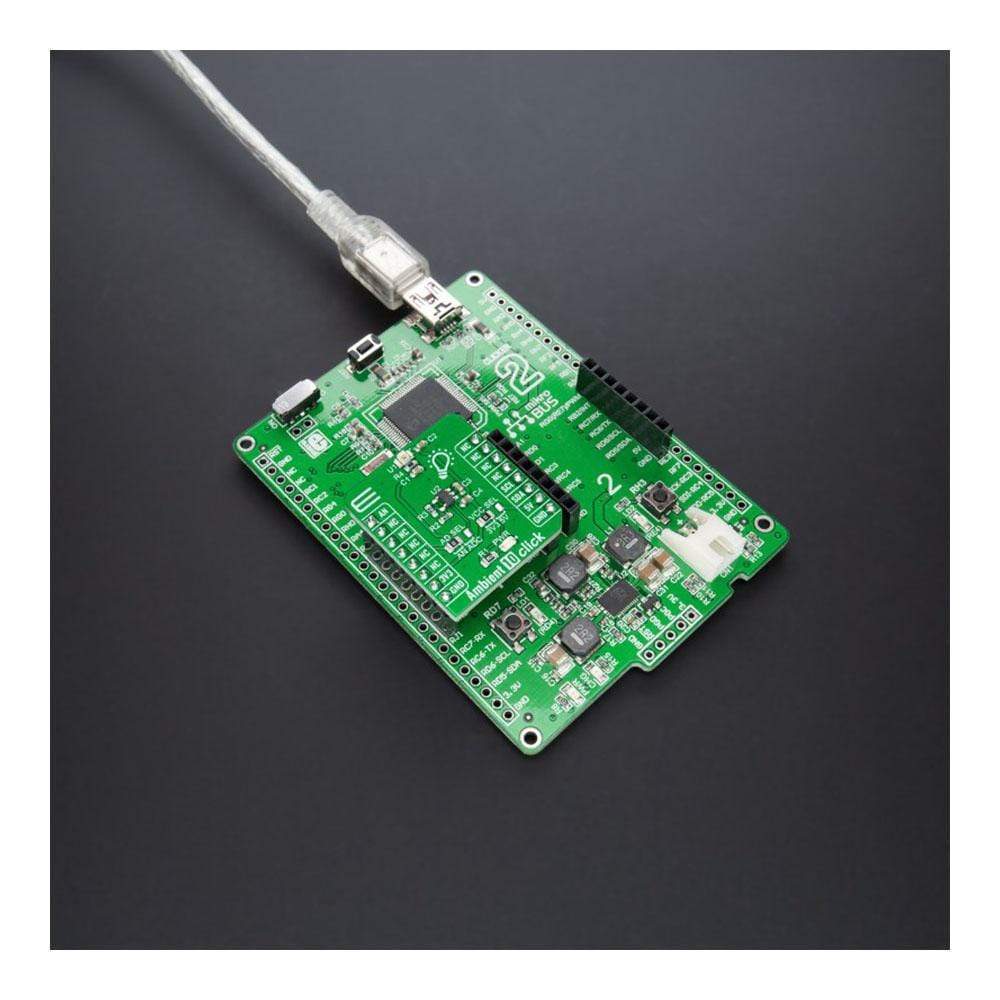
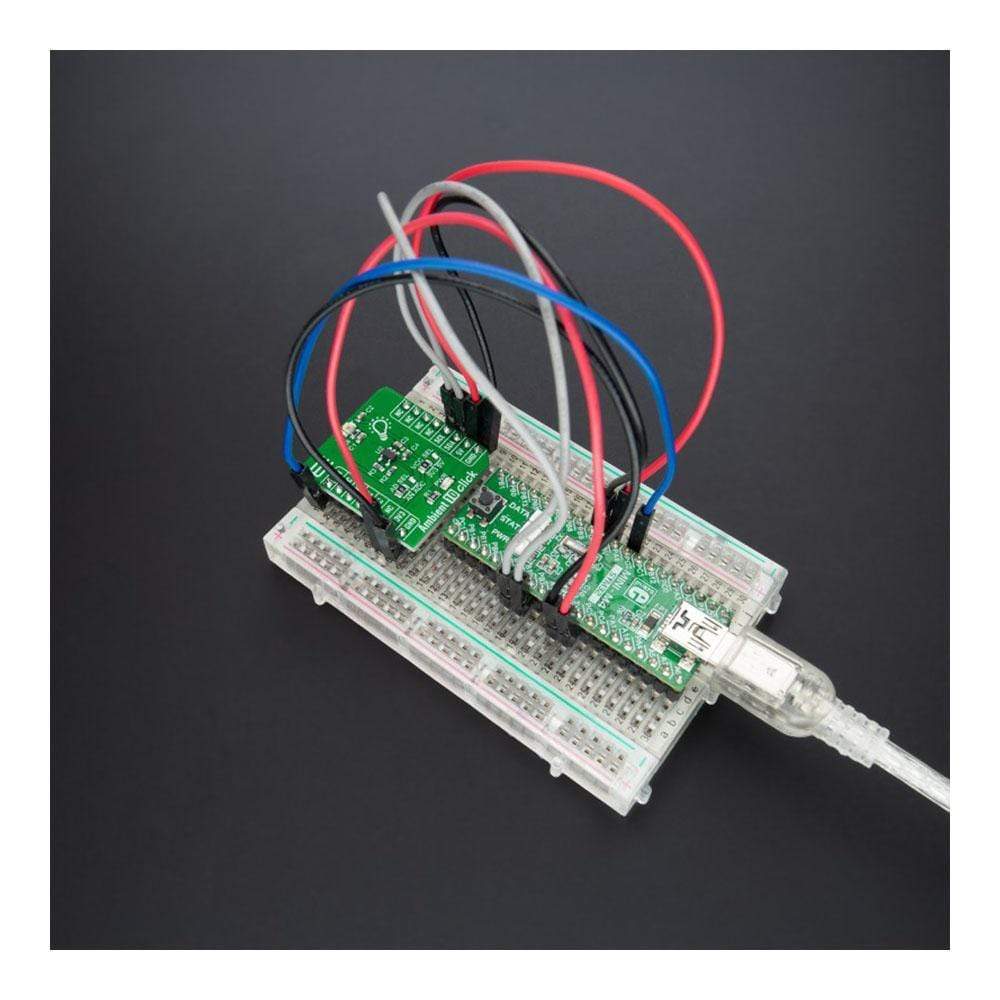
Overview
The Ambient 10 Click Board™ is a compact add-on board used to sense the amount of the present ambient light. This board features the APDS-9006-020, an analogue-output ambient light photosensor from Broadcom Limited. It consists of a spectrally suited photosensor, which provides excellent responsivity that is close to the response of the human eyes. Besides, it is also characterized by good output linearity across a wide illumination range, low sensitivity variation across various light sources, and comes with the ability to process the output signal in analogue or digital form. This Click Board™ is the most suitable for obtaining ambient light data for adjusting brightness in applications that require power saving and better visibility.
The Ambient 10 Click Board™ is supported by a mikroSDK compliant library, which includes functions that simplify software development. This Click Board™ comes as a fully tested product, ready to be used on a system equipped with the mikroBUS™ socket.
Downloads
Le Tableau à clic Ambient 10™ est une carte complémentaire compacte utilisée pour détecter la quantité de lumière ambiante présente. Cette carte comprend l'APDS-9006-020, un capteur photoélectrique de lumière ambiante à sortie analogique de Broadcom Limited. Il se compose d'un capteur photoélectrique adapté au spectre, qui offre une excellente réactivité proche de la réponse de l'œil humain. En outre, il se caractérise également par une bonne linéarité de sortie sur une large plage d'éclairage, une faible variation de sensibilité sur diverses sources lumineuses et est doté de la capacité de traiter le signal de sortie sous forme analogique ou numérique. Cette Click Board™ est la plus adaptée pour obtenir des données de lumière ambiante afin de régler la luminosité dans les applications qui nécessitent des économies d'énergie et une meilleure visibilité.
L' Ambient 10 Click Board™ est pris en charge par une bibliothèque compatible mikroSDK, qui comprend des fonctions qui simplifient le développement logiciel. Ce Click Board™ est un produit entièrement testé, prêt à être utilisé sur un système équipé du socket mikroBUS™.
| General Information | |
|---|---|
Part Number (SKU) |
MIKROE-4777
|
Manufacturer |
|
| Physical and Mechanical | |
Weight |
0.02 kg
|
| Other | |
Country of Origin |
|
HS Code Customs Tariff code
|
|
EAN |
8606027383588
|
Warranty |
|
Frequently Asked Questions
Have a Question?
Be the first to ask a question about this.







